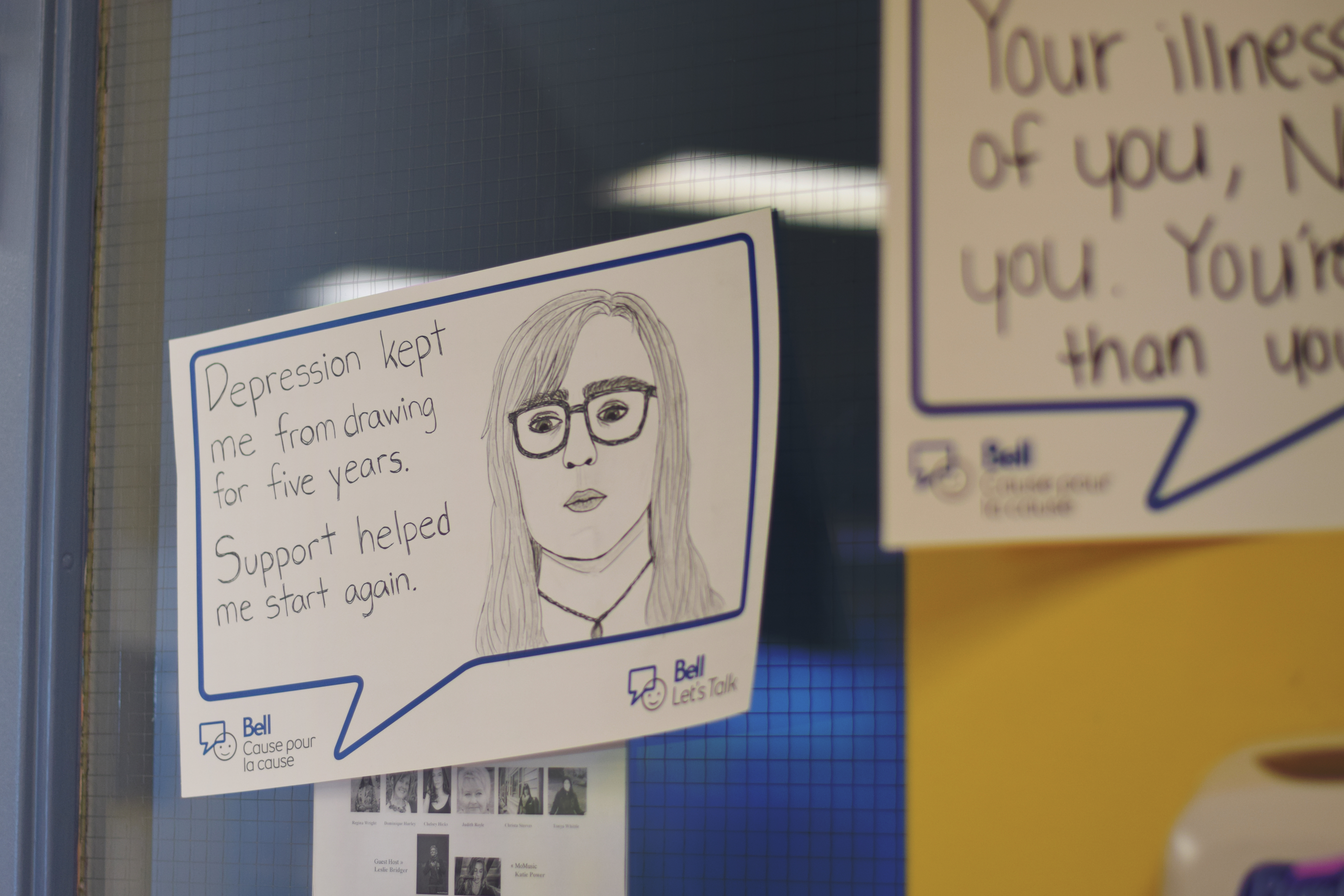The #BellLetsTalk conversation continues. The money is going somewhere!
Kicker News
Margaret Harvey
The #BellLetsTalk campaign has come and gone for yet another year, but mental health shouldn’t just be a one-day topic of discussion. In order for real change to occur, we need to continue the conversation.
The same complaints seem to surface every year: #BellLetsTalk is a publicity stunt, and Bell only does it for profit. Although some view Let’s Talk as marketing strategy, it has had people talking about mental health and ending stigma since 2011.
According to the #BellLetsTalk website, a total of about 138 million social media interactions using the campaign hashtag took place on Jan. 31. This means about $6.9 million was raised for mental health initiatives in just one day across Canada, since Bell donated five cents for every interaction.
Where is the money going?
As of this posting, the #BellLetsTalk website lists only the four major gifts Bell has given out so far in 2018. The company has not yet released its community fund donations, as applications for the grants are still being accepted until March 31, 2018.

One of the four major gifts given out this year was to the Mental Health Commission of Canada. It received $1 million to go towards the creation of a new program that would focus on setting a national standard for post-secondary students’ mental health.
As for Newfoundland, #BellLetsTalk says in 2017, Choices for Youth in St. John’s received a grant. Angela Picco, a coordinator at Choices for Youth, confirmed the amount of $22,000.
“[With the money we] started a brand-new program at our outreach centre, and it’s called Man to Man. It’s a mental health support group for male-identifying or non-gender-conforming young people,” Picco said.
The idea for Man to Man came from the success of a similar program that Choices for Youth calls Momma Moments and from research from the Canadian Mental Health Association.
“When young men are not able to identify or voice their feelings or seek support, they may be unable to prevent existing mental health issues from worsening,” Picco said.
Man to Man targets young people who have displayed risky behaviour such as substance abuse or violence to mask their emotional or psychological problems. The creation of the project meets the needs of young male-identifying or gender non-conforming youth who are seeking support but lack the resources to benefit from the systems available.
“Don’t text me just because it’s Bell Let’s Talk Day.”
Amanda Murphy is a health care professional and has seen both sides of the mental illness coin.
“I’m after doing all kinds of counselling and stuff. I got PTSD, anxiety, depression; I’m a recovering addict, all that good stuff,” Murphy said. “I’m also a registered nurse, so I kind of got a unique perspective of the system.”
Murphy said with all the different levels of counselling she’s done, she’s never heard of #BellLetsTalk contributing to any of the programs she’s used. She went to the website on Bell Let’s Talk Day this year to see if she could find out where the funds go but couldn’t find the specifics she was looking for.
“Don’t text me just because it’s Bell Lets Talk day,” Murphy said.
Although she now knows where the funds go, she doesn’t necessarily agree with the way #BellLetsTalk promotes the message of mental health.

“I’ve realized that people can say they understand and support mental health, but they don’t know,” Murphy said. “It’s almost like an ego protection thing for some people. No one actually really knows what the problems are.”
Murphy went on to say how Canadians could help outside of #BellLetsTalk. She said coming out and talking about your own personal experience with mental illness is great awareness, but it isn’t education.
“If (the population) really was concerned, they’d educate themselves on how they can actually help,” she said. “It really needs to start inside the system.”
Although not everyone sees the results from #BellLetsTalk, the money still comes in thanks to those who want to speak up about their own experiences and to those looking to end the stigma.
If you’ve been keeping track, this article would have raised $0.55 towards mental health initiatives.




Be the first to comment